Have you noticed that home prices in the suburbs on the east side of Raleigh are way cheaper than home prices on the west side of Raleigh?
There’s a bunch of reasons why, and today I’m going to show you all of them.
Once we understand why the eastern suburbs are cheaper, we’ll take a look at future plans to understand just how long we can expect them to stay cheaper.
Location drives prices
Look at this graph. The average home price is $200,000 cheaper on the east side than on the west side. What the heck is going on here??
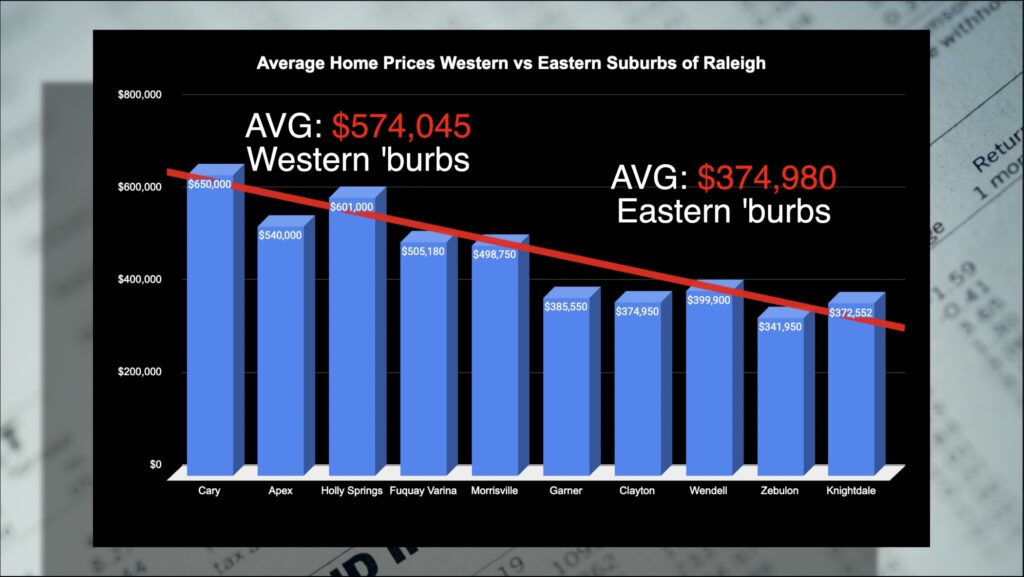
If we look at these properties on a map, you can see that there is a very distinct pricing pattern.
Look at these current median prices.
Proximity to RTP
The closer the property is to Research Triangle Park, which is our largest employment center, the more expensive it is. So you can see on this map that Cary is sitting directly below RTP and is the highest priced suburb in the area.
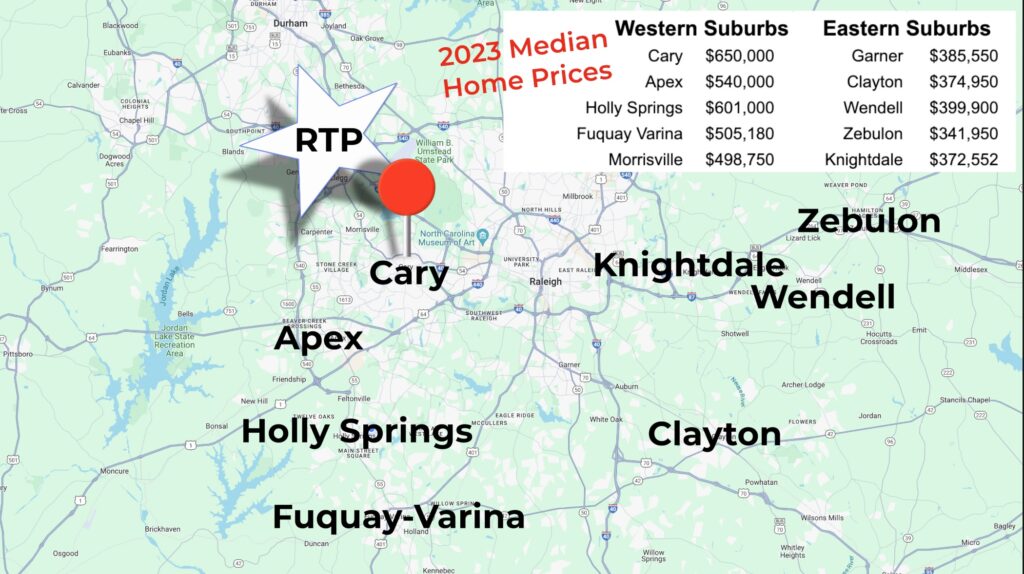
Now some of you might be thinking… what happened to Morrisville?
Isn’t Morrisville the closest suburb to RTP?
Outliers: Morrisville and Wake Forest
You are correct that Morrisville is closer to RTP, and it actually breaks the rule of proximity to RTP determining the value.
This is a great example that there are always way more variables than we can look at at one time, so we are oversimplifying a bit. Because I’m simplifying, I’m also leaving out Wake Forest, because like Morrisville, Wake Forest has become an outlier of sorts. It’s not cheaper like the rest of the eastern suburbs. It would probably take a whole article to cover that, so we won’t talk about it today.
But Morrisville is a fairly easy example to show why location isn’t the only factor in home prices.
In Morrisville there’s a significantly higher rate of attached housing.
In Cary, 24% of homes that sold in the last year are attached homes, either condos or townhomes. And in Morrisville, 42% of homes that sold in the last year are attached.
Density brings down housing costs because it increases the amount of inventory per capita. Note that this does not necessarily mean that real estate is cheaper in Morrisville than in Cary.
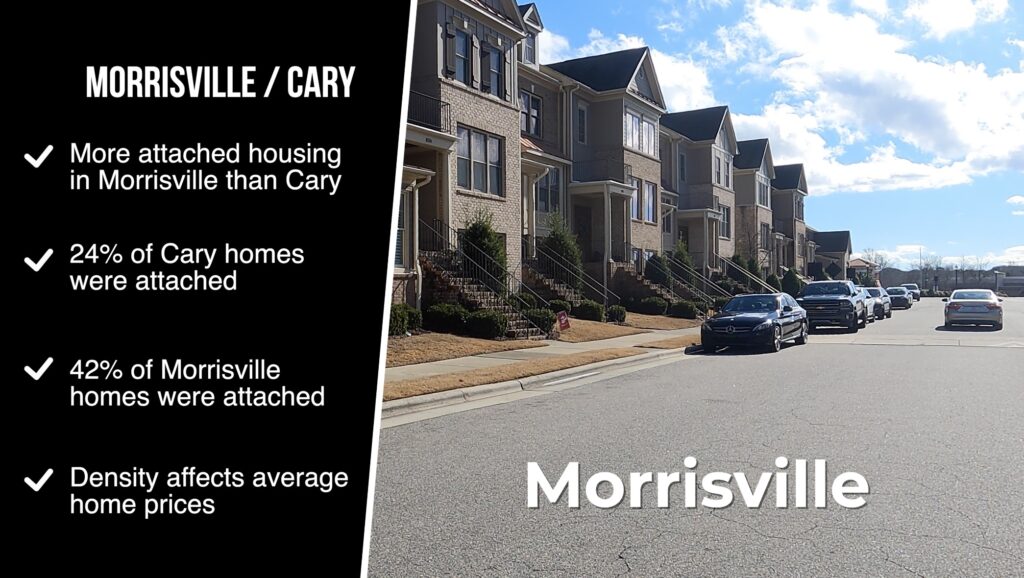
When you’re looking at median homes, you’re not really comparing apples to apples.
The median home in Cary might be a 3,000 square foot single family home, and the median home in Morrisville might be a 2,200 square foot townhome.
Just keep in mind that there are lots of variables that go into housing, and we’re making generalizations in this article.
Fuquay-Varina is the clue
To help visualize the pricing differences, let’s categorize the western suburbs as Cary, Apex, Holly Springs and Fuquay-Varina, and the eastern suburbs are Knightdale, Wendell and Zebulon.
But I want to dial into one suburb that I think holds a very interesting piece to the puzzle of why prices are this way, and how prices will shift across the entire triangle in the future.
That suburb is Fuquay-Varina.
In 2017, I wrote this blog about housing prices in the Triangle. In 2017, Fuquay’s pricing lined up more with prices in the eastern suburbs. But look what has happened to it over time. By 2021, Fuquay was catching up.
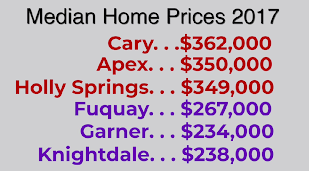
And today, these higher prices are holding steady. [$505,000 in December 2023]
Put a little differently, Fuquay’s median home price is 89% higher today than it was in 2017. But the eastern suburbs have only increased about 58% in the same time period.
Why? I think the answer to that lies in the three L’s of real estate.
Location, location, location.
But…. Fuquay’s location hasn’t changed but it’s price has so why is Fuquay getting so much more expensive if it’s still in the same location?
If we can get what’s happening in Fuquay, we can apply that logic to the other eastern suburbs to make some predictions about what could happen to prices on that side of town.
Amenities drive prices
Fuquay is about the same distance to RTP as Knightdale and Wendell.
So why is Fuquay more expensive?
I think the first reason Fuquay has gotten more expensive, even though it’s still a haul to RTP, is because those western suburbs have developed enough value in and of themselves.
It’s no longer just the proximity to RTP that has value. The proximity to Holly Springs and Apex is a big deal as well.
The western suburbs have a longer history of extensive planning and development than the eastern suburbs. If you contrast Cary, Apex or even Holly Springs and Fuquay with the eastern suburbs, you are just going to see more. More downtown development. More shopping, restaurants and more parks.
Fuquay has 2 distinct historic downtown districts. And Fuquay is also 10 minutes from Holly Springs downtown. And 20 minutes from downtown Apex.
The eastern suburbs have downtowns, but they aren’t as developed as the western suburbs downtowns.
That doesn’t mean these things aren’t coming in the near future to the eastern suburbs. The eastern suburbs have definitely started developing more and there’s a lot more to come.
Chipotle just signed a lease in Wendell Falls. But they aren’t there yet. And these kinds of amenities are important to people purchasing homes and they’re willing to pay for them.
So even though Fuquay is just as far from RTP, it’s much closer to all these great outdoor walkable shopping districts and the many parks on the western half of Wake County. There’s just more to do over here.
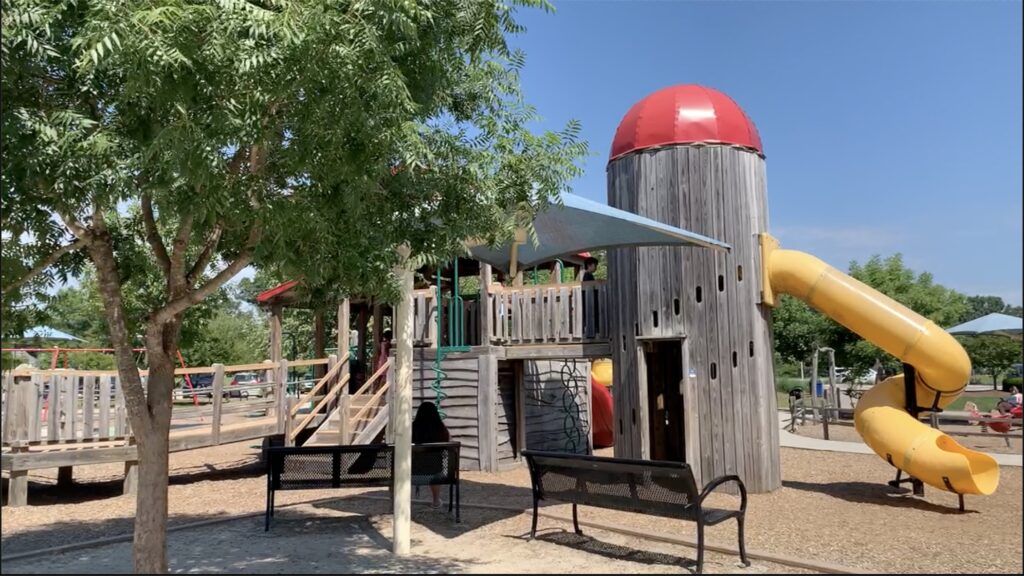
The Future of the Eastern Suburbs
So what is coming in the future for the eastern suburbs? Knightdale is looking at some incredible developments over the next 10 years.
Downtown North
Downtown North is a 90 acre mixed use development adjacent to Knightdale Station. The plans include 468 residential homes for purchase plus 100 apartment units, up to 500,000 square feet of commercial and retail space, plus tons of amenities throughout the development.
The project will have enhanced streetscapes with public art, as well as plans to attract a high end grocer to the development, which the area is really lacking.
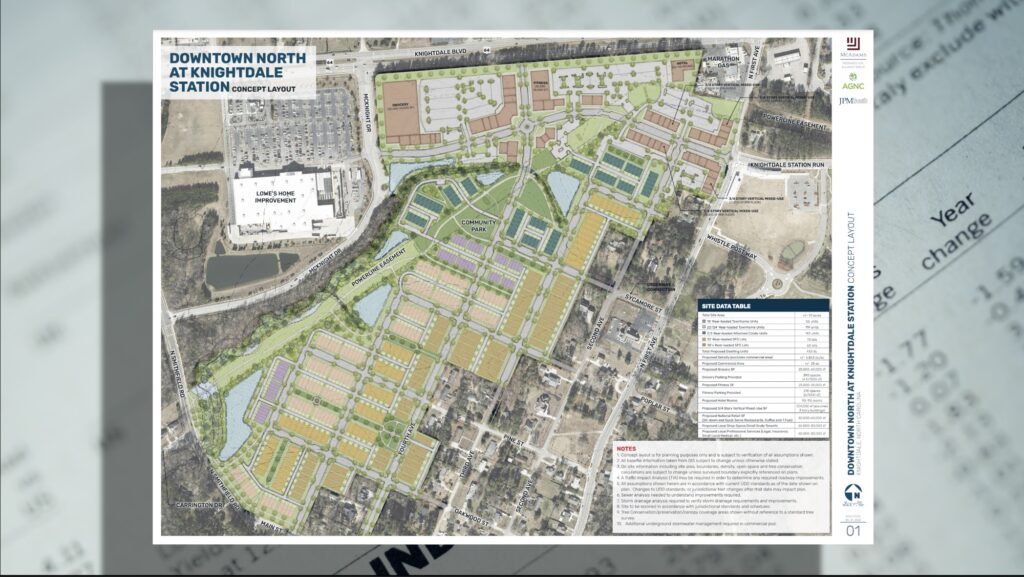
Knightdale River District
Knightdale has also approved development of a river district along the Neuse River.
The River District covers 2600 acres and 4 square miles. While the plans haven’t yet been solidified, some of the developments that were mentioned in the proposal were parks, and greenways connecting other greenway systems in the town to the river district.
They will make the river more accessible with things like a kayak launch and a boardwalk. They want this to be a trail oriented mixed use area that is very walkable and bikeable.
They’re considering converting the Knightdale Community Pool into a river themed splash park. The goal of the plan is to protect the natural resources of the area while making it a place people can enjoy, with benches along the river.
They plan to create a commercial district along the river, using a cohesive architectural design of brick and stone with steel accents. Lots of mixed use and neighborhoods connected by greenways to the river.
These kinds of developments will change the entire feel of eastern Wake County.
Change has a domino effect
This area is 15 minutes from both Wendell and Zebulon, so this makes destinations, upscale shopping, parks and greenspaces much closer and more accessible.
And while those towns are smaller, they have really good plans for future development as well. I particularly like what I am seeing in Zebulon. They have a fantastic greenway plan to connect the whole town and make it walkable.
But there’s one thing you have to understand. Zebulon’s population is what Fuquay Varina was in 1999.
Zebulon, Knightdale and Wendell together are about the population of Fuquay Varina today. This is a very sparsely populated area. Now, it will grow much faster than Fuquay did because everything in the Triangle has reached a critical mass.
But we’re at least 10 years away from seeing this things in completion.
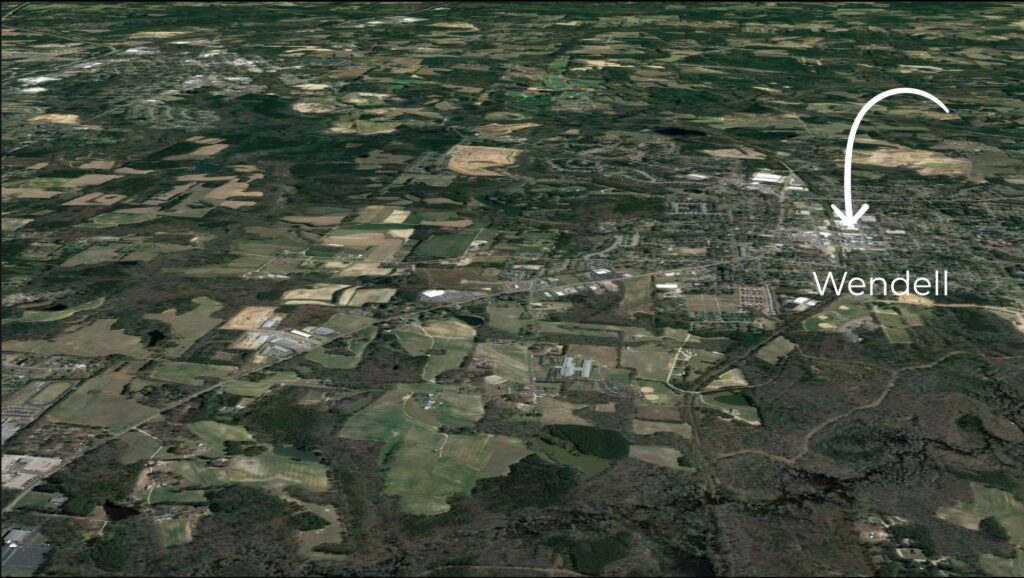
Clayton’s Copper District
At the same time all this is happening in Knightdale, Clayton is developing their Copper District.
The Copper District was a farm belonging to the Penny family. This large parcel is being reimagined into a live work play development where the land and ecosystems are blended into the lifestyle. They’re modeling the district after developments that have successfully integrated the elements of agriculture into community life. There’s Harvest in Northlake Texas. And Serenbe ln Chattahoochee hills Georgia.
The Copper District will have an extensive trail network connecting commercial to residential sections, plenty of preserved tree canopy, a broad range of retail shopping, including restaurants and entertainment, a public library, a variety of residential housing options, and outdoor recreation and amenity spaces.
The Copper District will also be adjacent to the new Johnston UNC Healthcare expansion, providing excellent healthcare right in Clayton.
If you liked this article, you might also be interested in this one, where I take a look at what we expect to see in the 2024 Raleigh housing market!

